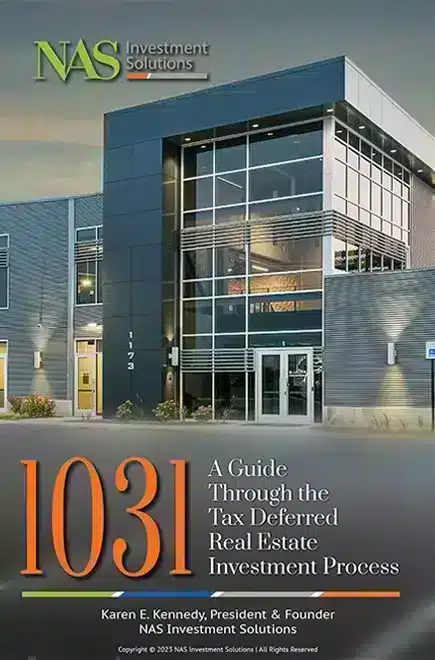Updated July 26, 2024
Diversifying a property investment portfolio can lead to higher yields, lower risk, and preservation and growth of investment capital.
In this article we’ll discuss the top four ways to diversify a real estate investment portfolio, and some common mistakes to avoid when diversifying property investments.
Using different risk-and-reward levels to diversify a property portfolio
When real estate investors think about diversifying their portfolio the first thing that comes to mind are different asset classes and locations. Those are two good ways to diversify a property portfolio, and we’ll cover those next.
However, most investors have a certain type of real estate they’re comfortable with – single-family rental homes, multifamily apartment buildings, office buildings and shopping centers, or single-tenant triple net leased buildings. One of the easiest ways to diversify is by using different investment strategies that offer varying levels of risk and reward within the same asset class the investor already knows and understands.
There are three main strategies for investing in real estate:
- Core strategy minimizes risk with investment in newer property with credit-quality tenants
- Value-add strategy seeks to add value with some capital investment and creative property improvement techniques
- Opportunistic investment strategy is used for new property or redevelopment projects
An investor who purchases value-add office buildings may diversify a portfolio by using the opportunistic strategy to convert an old warehouse into office space. Or, a core property investor who buys Class A shopping centers may decide to accept a little more risk – in exchange for more reward – by purchasing a retail center whose income can be improved through his professional property management and leasing teams.
In both examples the investor is staying within the asset class they are comfortable with and simply applying a different investment strategy to diversify their property portfolio.
Asset class as a diversification strategy
Many investors choose to diversify a property portfolio by investing in different asset classes and subclasses within each major class. By investing in property across various asset classes investors can achieve potentially higher returns and minimize risk by not having all their money in one product type.
Here are the four major real estate asset classes and some of the subclasses within each:
- Residential rental – single-family, small multifamily, larger apartment buildings, student housing, senior living, and retirement facilities
- Retail – neighborhood shopping centers, regional malls, power centers, restaurants, pharmacies, grocery stores, and gas stations
- Office – white collar professional services, medical, government-occupied, coworking office space, and mixed-use live-work property
- Industrial – warehouse, distribution, data server buildings, manufacturing, and research and development space
Geography
Investing in different markets is another keyway to diversify a real estate investment portfolio. Just as different property asset classes can be used to minimize risk, buying property in other locations gives investors a way to profit from areas with above-average population growth or a stronger job market.
For example, geographic diversification of a property portfolio can be accomplished by concentrating on major metro areas such as San Francisco or Dallas, secondary markets such as Sacramento or Austin, tertiary markets bordering major metropolitan areas, or even submarkets or distinct neighborhoods within a large metropolitan statistical area.
Alternative real estate investments
Property investment portfolios can also be diversified by adding alternative real estate investments. These options provide investors with the benefits of real estate without the responsibilities of direct ownership:
REITs
A real estate investment trust (REIT) is a company that owns investment-grade commercial real estate. Shares of REITs can be purchased on the major stock exchanges and provide shareholders with regular dividend payments. Because REITs usually focus on investing in specific real estate asset classes, investors diversifying their property portfolios benefit by indirect property ownership and diversification of property asset class.
Crowdfunding
Real estate crowdfunding companies raise small amounts of money from a large number of investors to develop, purchase, lease and manage high quality commercial real estate. Investors who crowdfund receive regular payments based on the income streams a property generates, and a share of any appreciation when a property is sold. Unlike REITs, crowdfunding investments are not publicly traded and are best suited for a long-term, passive real estate investment strategy.
Securitization
Financial institutions securitize residential and commercial real estate loans by pooling them together to create an MBS or mortgage-backed security. MBS tranches offering different yields, risk levels, and maturities are then sold as bonds to institutional and individual retail investors.
Securitization offers real estate investors a way to earn fixed-income from debt used to finance investment-grade triple net leased property occupied by financially secure regional and national tenants.
Risk factors to consider when diversifying a property investment portfolio
While there are definite advantages to diversifying a property investment portfolio there are also several potential risk factors to keep in mind:
- Active, hands-on real estate investors will need to quickly learn the unique characteristics of new asset classes and markets
- Professional asset, property management and leasing teams outside of a home market can be difficult to find and oversee remotely
- Diversification can take time away from managing the current investments in a property portfolio
Getting the most from diversifying a property investment portfolio
Diversification is one of the main ways real estate investors mitigate risk and boost returns in a property investment portfolio. Before diversifying a portfolio, investors should have a clear idea of what their short- and long-term investment goals are and understand the different options available for diversifying a property investment portfolio.
Although real estate investments are often held for years this doesn’t mean portfolios can’t change. Investors who understand what they want to achieve can reduce property investment portfolio risk and boost returns through diversification at any time by re-balancing their real estate investment portfolio.








